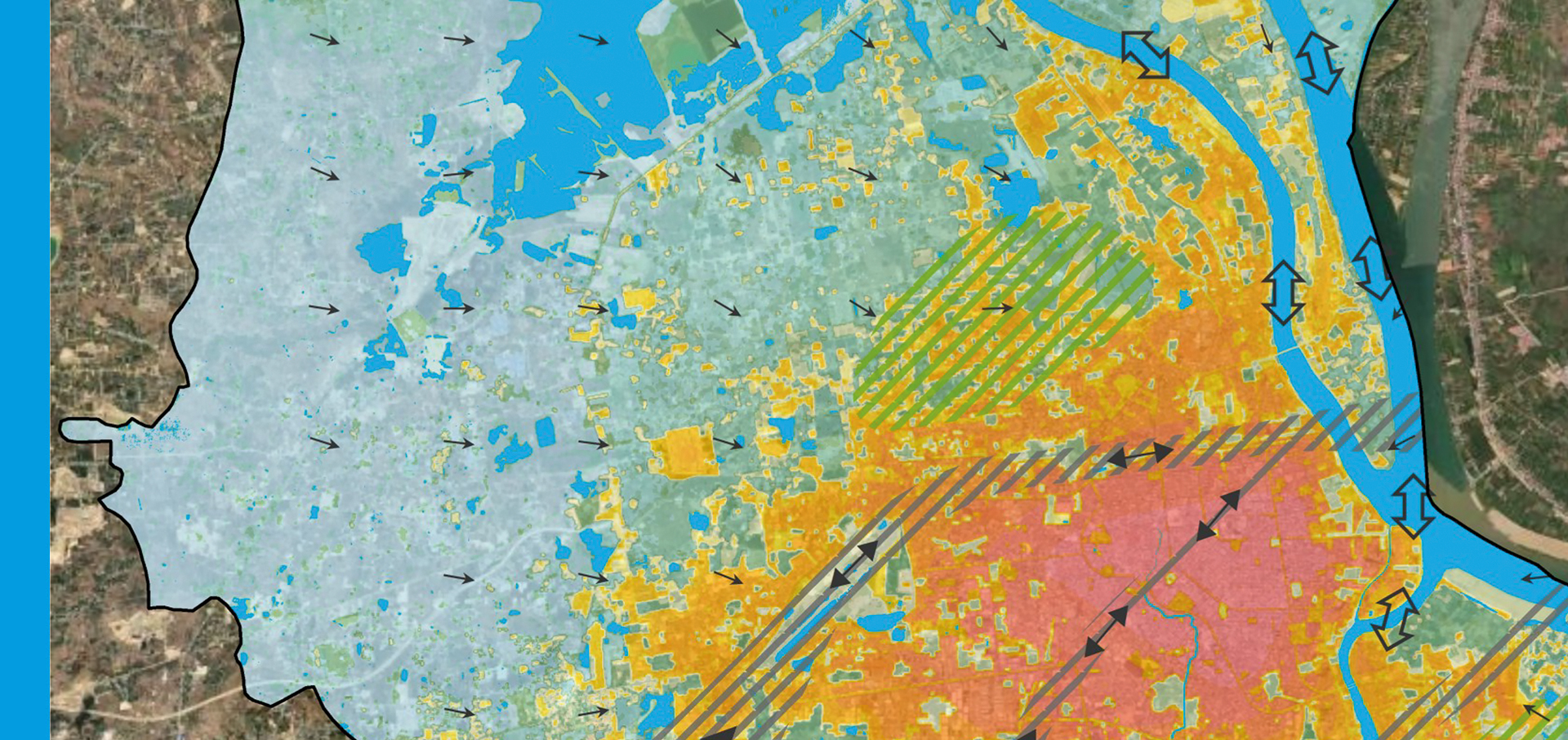WP#5 in a Nutshell
At first, we aim to generate a climate analysis map that takes the effects of the urban climate in Southeast Asia into account. Based on this informal instrument, a strategy can be developed that includes land use management and climate-relevant recommendations.
The “urban quality of life”, a city worth living in, should always be the focus of attention in climate change, extreme weather events, but also in questions of ventilation and human health.
Rationale & Background
Within the Build4People project urban climate recommendation lead to more sustainable development and sustainable buildings. Consequently, formal planning needs to be addressed with climate information’s. Additional informal planning analyses are needed to be part of the formal procedure.
The approach to urban climate issues should incorporate a planning approach to urban climate investigation methods and in their presentation of results.
Further objectives are:
- To increase quality of urban planning and building design with meso and microscale climatic analysis.
- To improve thermal and air pollution outdoor comfort by using urban climatic recommendation maps and analysis.
Theoretical Framework
Climatic systems describe areas with the same urban climatological characteristics. They are generated and influenced by morphological and city fabric factors. They include thermal load, ventilation and can also evaluate air pollution aspects. The climatope information on the territorial level is then used to specify recommendations depending on existing wind regimes and can also be used to make recommendations for specific planning purposes.
The underlying methodology for the map is to combine layers, which were deduced from land use maps or other maps, translated to thermal and dynamic aspects with weighting factors. These weighting factors range from building volume to heat storage, greenery to heat budget, openness to ventilation, roughness to wind speed and topographical information.
Research Questions
The task of planning-related urban climatology is to improve air quality and thermal conditions for a liveable city asking the relevant questions:
- How to reduce urban heat islands (heat island as an indication of thermal comfort / discomfort)?
- How to optimize urban ventilation (air exchange, ventilation lanes), urban planning and urban development for air quality and thermal comfort?
- What is the aim of open space planning?
- Are there possibilities to preserve or to promote fresh air or cold air influx areas to foster air exchange?

Objectives
Within the Build4People project urban climate recommendation lead to more sustainable development and sustainable buildings. Consequently, formal planning needs to be addressed with climate information’s. Additional informal planning analyses are needed to be part of the formal procedure.
The approach to urban climate issues should incorporate a planning approach to urban climate investigation methods and in their presentation of results.
Further objectives are:
- To increase quality of urban planning and building design with meso and microscale climatic analysis.
- To improve thermal and air pollution outdoor comfort by using urban climatic recommendation maps and analysis.

The results of WP#5 empirical fieldwork add to existing knowledge in terms of urban climate modelling and contribute to a more thorough knowledge of urban climate patterns within a highly dynamic urban environment under tropical climate conditions.

Outlook
Based on the previous analyses of urban climate conditions following perspectives and plans can be derived:
- Climate recommendations for urban master plans to characterize areas for city for development perspectives.
- Recommendations for zoning plans or neighborhood plans or blocks with detailed specifications.
- Recommendation for building design, building sites and building density
- Future perspectives will take the climate change into account, especially for open spaces and input of vegetation types.
WP#5 is implemented by the Institute for Climate and Energy Concepts GmbH (INKEK) and the Royal University of Phnom Penh (RUPP).

Build4People RD Phase Milestone WP#5 R1: Updated bibliographic research and literature
CONTACT:
INKEK GmbH – Institute for Climate and Energy Strategies • Institut für Klima- und Energiekonzepte
Schillerstrasse 50 • 34253 Lohfelden • Germany
WP#5 Leader: Prof. Dr. Lutz Katzschner (katzschner@inkek.de)
WP#5 Research Associate: Dr. Janalisa Hahne (hahne@inkek.de)
WP#5 Research Associate: Sebastian Kupski (kupski@inkek.de)
Local Research Partner: Royal University of Phnom Penh (RUPP)


